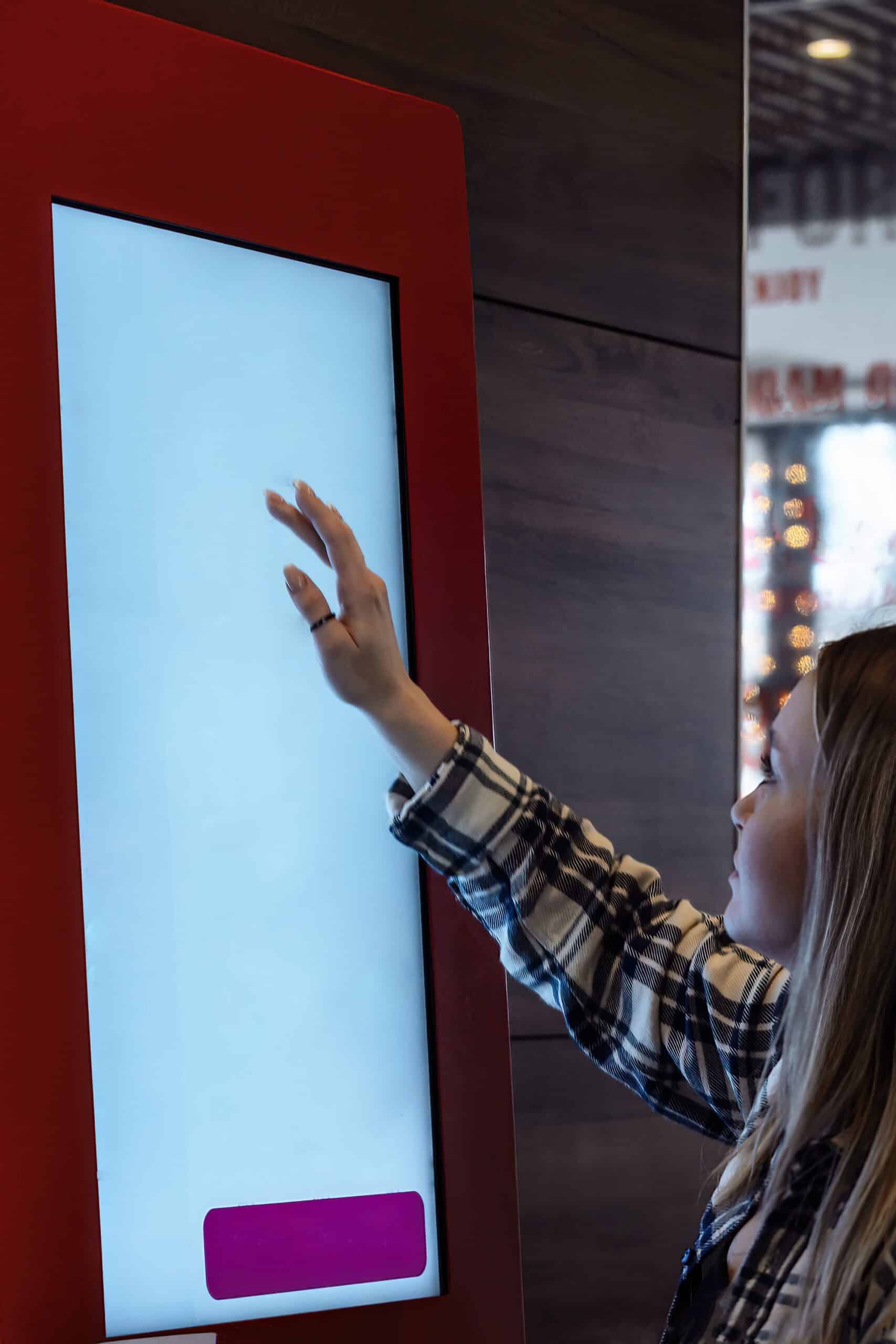Interactive Digital Signage for Retail Experience
What Is Interactive Digital Signage?
Interactive digital signage refers to digital displays equipped with touchscreens, sensors, or other interactive technologies that allow customers to actively engage with content. Unlike static signage, these systems enable two-way interaction, making it possible for retailers to deliver tailored experiences.
1. Personalized Customer Engagement:
Interactive digital signage can be integrated with technologies like facial recognition, QR codes, or RFID tags to provide personalized recommendations. For instance, a display in a fashion store could suggest outfits based on a customer’s browsing history or preferences.
2. Self-Service Convenience:
Customers can browse inventory, check product availability, or even complete purchases directly on interactive kiosks. This self-service capability reduces wait times and enhances convenience.
3. Product Discovery and Education:
Retailers can use interactive displays to provide detailed product information, tutorials, or virtual try-ons. For example, a cosmetics store might offer an AR-powered digital mirror where customers can experiment with makeup looks.
4. Gamification of Shopping:
By incorporating gamified elements like quizzes, spin-to-win games, or scavenger hunts
5. Omnichannel Integration:
Interactive signage can bridge the gap between online and in-store shopping. Customers can start a shopping experience on the retailer’s website and pick up where they left off at an in-store kiosk.
Technologies Powering Interactive Digital Signage
1. Touchscreens: Enables direct interaction with content.
2. Motion Sensors: Detect gestures and movement to trigger dynamic displays.
3. Augmented Reality (AR): Allows virtual product try-ons or immersive experiences.
4. Beacons and IoT: Provide location-based content and promotions.
5. AI and Machine Learning: Deliver personalized recommendations based on user behavior
Benefits for Retailers
1. Enhanced Customer Experience: Shoppers appreciate a tailored and interactive journey.
2. Increased Sales: Personalized recommendations and promotions drive impulse purchases.
3. Data Collection: Interactive signage captures valuable data on customer preferences and behaviors.
4. Brand Differentiation: Cutting-edge technology helps retailers stand out from competitors.
5. Cost-Effectiveness: By combining advertising, information, and entertainment, digital signage delivers a higher ROI compared to traditional methods.
Success Stories: Interactive Digital Signage in Action
• Nike: Uses interactive kiosks to let customers design custom shoes in-store, blending creativity with retail.
• Sephora: Employs AR-powered mirrors that allow shoppers to “try on” makeup digitally before purchasing.
• McDonald’s: Introduced self-service kiosks for ordering, making the dining experience faster and more efficient.
Future of Interactive Digital Signage in Retail
As technology advances, interactive digital signage will become even more sophisticated. The integration of AI, 5G connectivity, and advanced sensors will make these systems smarter, faster, and more intuitive. Retailers who adopt this technology early will be well-positioned to deliver unparalleled shopping experiences and foster customer loyalty.
Conclusion
Interactive digital signage is revolutionizing the retail sector by merging technology with customer engagement. It offers a powerful way to enhance the in-store experience, drive sales, and collect actionable insights. For retailers looking to stay ahead in a competitive landscape, investing in this technology is no longer an option but a necessity.

















